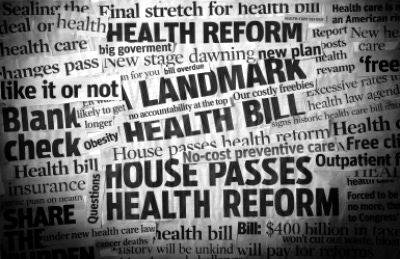Health-Care Changes Loom: Is Your Self-Storage Business Ready?
The sweeping health-care reform passed in 2010 takes full form next year. Heres what self-storage owners needs to know about the mandate, penalties and health-care exchange programs.
April 2, 2013

By Sherri Elliott-Yeary
The sweeping health-care reform passed in 2010 finally takes full form in 2014. Heres what self-storage owners needs to know.
The countdown to 2014when the entirety of the health-care legislation passed in 2010 is set to take effecthas begun. Three major changes will happen next year as a result of the Affordable Care Act, and each poses challenges for employers:
First, all taxpayers will be required to show proof of health insurance when paying their taxes or pay a penalty.
Second, employers with more than 50 full-time employees will be required to provide health insurance or pay a penalty.
Third, employees will have a choice between purchasing health insurance at work and receiving the employer contributions or purchasing it in an exchange and receiving federal subsidies to lower the cost of premiums.
Heres a more detailed look into what self-storage employers need to know to prepare.
The Mandate
Every man, woman and child will be required to have health coverage starting in 2014. This means a large number of the uninsured will join exchanges and take advantage of this new low-cost avenue to purchase health insurance without exclusions for pre-existing conditions or history.
However, many experts believe only the sick will purchase insurance immediately since they cannot be turned away or charged higher rates. Millions of young, healthy people may simply pay the penalty for at least the first few years$95 in 2014, for exampleor wait until they become sick to sign up for insurance. This is good news if youre an uninsurable sick person. But for employers, its likely to mean higher rates to cover the increased costs to the system.
Pay or Play
Starting in 2014, employers with more than 50 full-time employees are required to provide health insurance, or else theyll have to pay a penalty if at least one employee joins the exchange and receives a subsidy. The penalty is $2,000 per full-time employee over 30 employees. In other words, if an employer has 60 full-time employees, he will pay a penalty on 30 employees.
For some businesses, however, paying a penalty may be cheaper than offering insurance. Many companies are considering their options, weighing the impact of dropping insurance on recruitment and its effect on their ability to attract talent.
Furthermore, companies can be subject to penalties if the cost of self-only insurance is more than 9.5 percent of an employees income and the employee enters the exchange. If the cost is higher than the 9.5 percent threshold, the insurance is deemed unaffordable, and the employer is penalized at $3,000 per full-time employee who opts for the exchange.
The Exchange
By 2014, each state is supposed to establish a health-care exchange where its citizens can shop for health insurance among plans offered by various private insurers. Most states have refused to implement this, which will place the burden on the federal government to pick up the expense. At this point, no one knows what the exchanges will look like or how theyll work, but most experts envision a website that will function like a traditional e-commerce website.
Starting in March 2014, employers will be required to provide a written notice to employees explaining how the exchanges work and the employees option to decline the employers insurance in favor of the exchange. If the employee purchases coverage through the exchange, the federal government will provide premium assistance in the form of an advanceable tax credit based on income level and number of dependents. Employees making up to 400 percent of the federal poverty level are eligible for the subsidy. That equals roughly $90,000 for a family of four.
In all, some employers may find little impact on participation in their plans, while others may see a mass exodus to the exchange. If the latter happens, the employer group will be smaller, likely driving up costs further. Its therefore incumbent on employers to be prepared and model out a worst-case scenarioand sooner rather than later.
Sherri Elliott-Yeary is an author, speaker and consultant in the area of human resources and talent management. She is president of Human Capital Solutions, a division of Imprimis Group. To reach her, call 214.802.2345; e-mail [email protected] ; visit www.generationalguru.com .
You May Also Like





